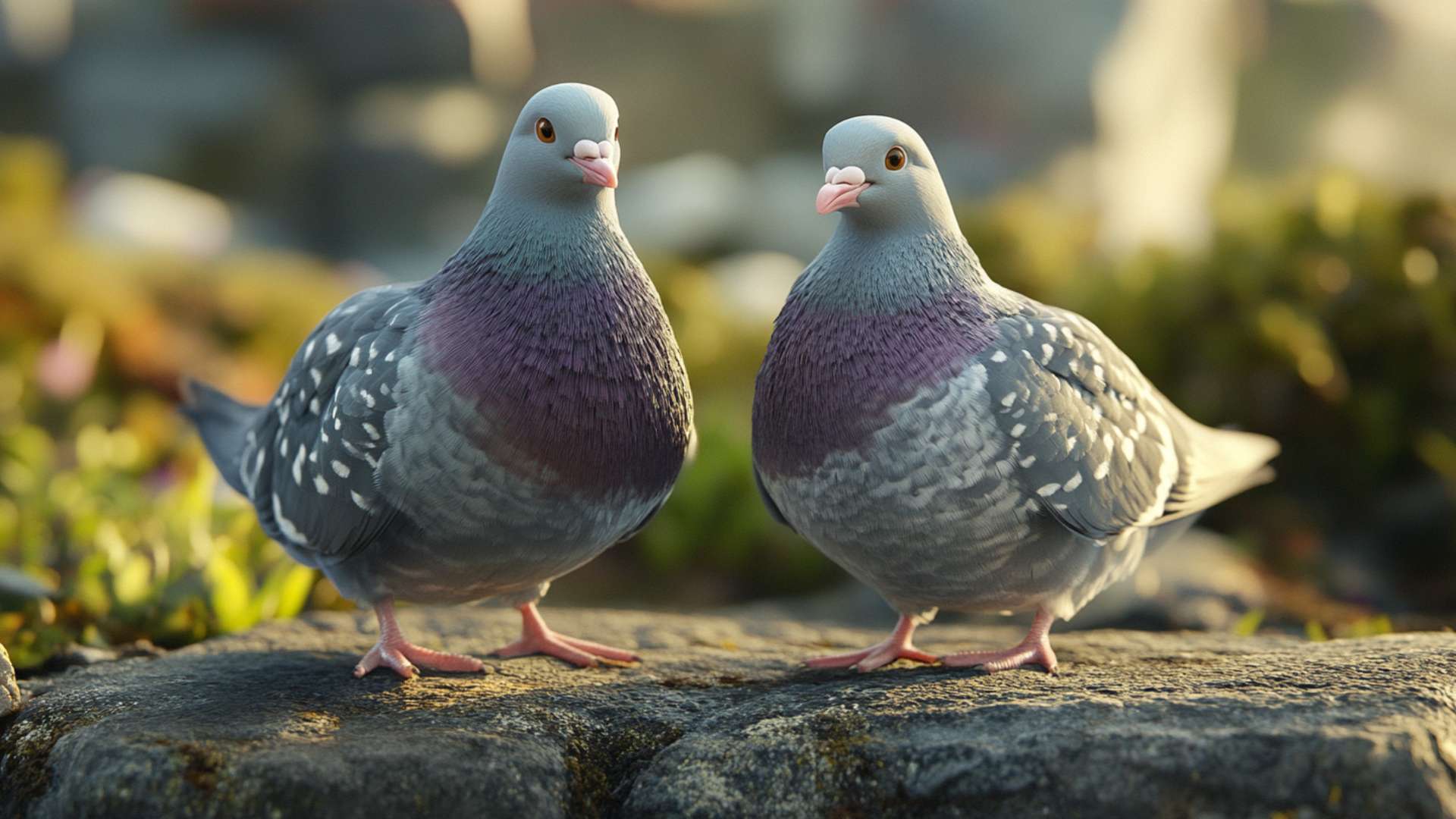Welcome, dear readers, to an intriguing exploration of the resilience and resourcefulness of our fine feathered friends: pigeons. Often seen gracefully gliding through the skies or strutting with poise in our city streets, these avian creatures possess remarkable qualities that never cease to pique our curiosity. In this article, we delve into the captivating world of pigeons and unravel the mysteries surrounding their need for water.
Fascinating Facts about Pigeons
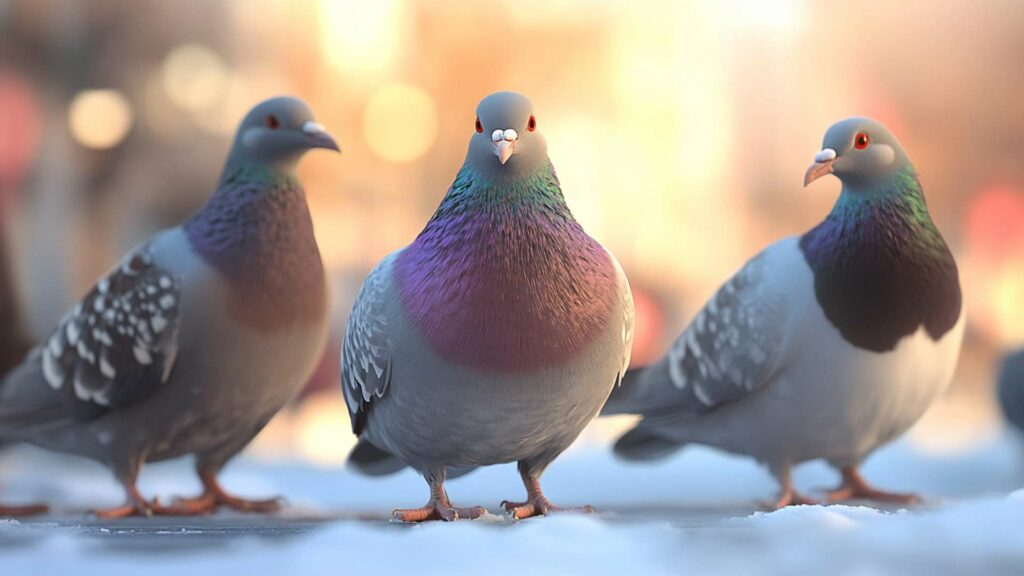
Before we embark on our quest for knowledge, pigeon owners, let us pause for a moment to appreciate some remarkable tidbits about these magnificent birds. Did you know that pigeons have been companions to humans for thousands of years?
Their beauty and gentle nature have long made them cherished fixtures in paintings, sculptures, and even literature. Furthermore, pigeons possess extraordinary navigational skills and are often employed as messenger birds due to their uncanny ability to find their way home over vast distances.
Another intriguing fact is that pigeons exhibit a wide range of colors and patterns on their feathers—a true testament to nature’s artistry. From delightful shades of gray, white, and black to vibrant hues of iridescent greens and purples, these avian fashionistas never cease to amaze with their sartorial choices.
The Importance of Water for Survival
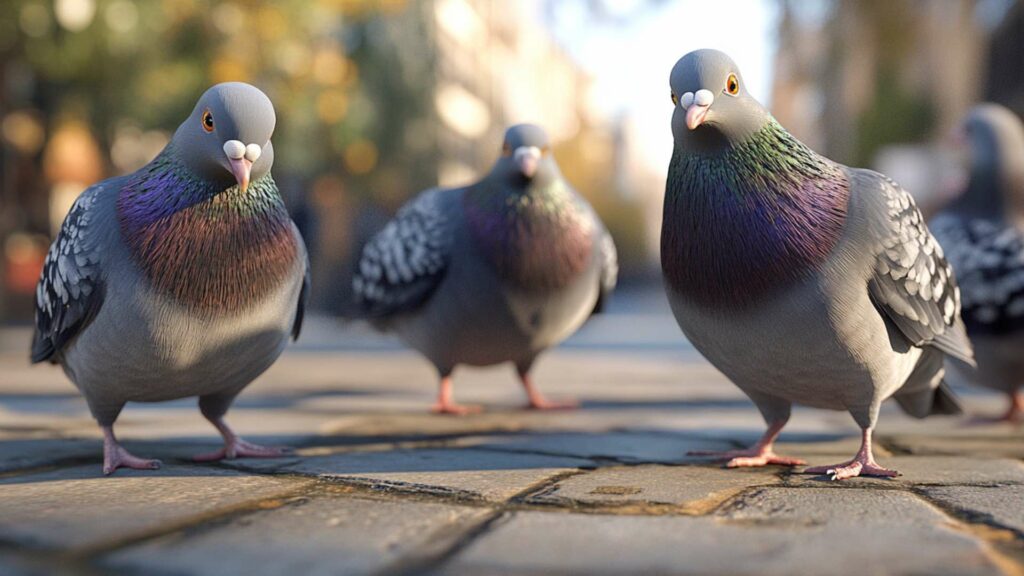
Water is one of life’s fundamental necessities—a precious elixir that sustains all living beings on this planet. Pigeons are no exception; they require regular access to water in order to thrive.
Just like us, humans need water for proper hydration, nutrition, and bodily functions, and so do these elegant creatures. You see, water plays a vital role in maintaining a pigeon’s overall well-being.
It aids digestion by facilitating the breaking down of food particles within their bodies. Additionally, water enables vital nutrients to be absorbed and transported throughout their avian systems, ensuring optimal health.
Without sufficient hydration, pigeons can experience a range of health issues, such as dehydration, organ failure, and weakened immune systems. Moreover, water not only quenches their thirst but also serves as a medium for maintaining proper body temperature through evaporation.
Pigeons lack the ability to sweat like we humans do; therefore, they rely on other mechanisms to regulate their body heat. By panting and dissipating moisture through their beaks or feet in hot weather, pigeons keep themselves cool and avoid overheating.
Pigeon’s Water Needs
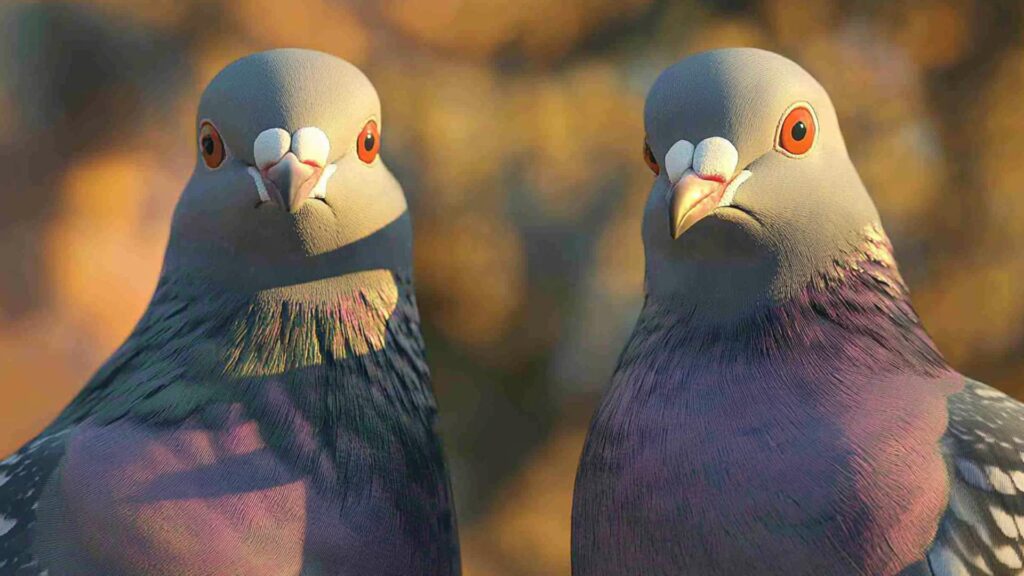
The Liquid Lifeline
Water is the liquid lifeline that sustains all living beings, and pigeons are no exception. Just like humans, these feathered creatures rely on water to survive.
While we often associate birds with flight and soaring through the sky, their ability to stay hydrated is just as crucial for their well-being. Let’s delve into the fascinating world of a pigeon’s water needs and explore the daily water intake requirements.
Daily Hydration Quota
Pigeons have specific water intake requirements to maintain optimal health and function. On average, an adult pigeon needs about 30-50 milliliters of water per day.
However, this amount varies depending on factors such as temperature, physical activity, and diet composition. In warmer climates or during periods of increased physical exertion, pigeons may require more water to stay properly hydrated.
Factors Affecting Water Consumption
Several factors can influence a pigeon’s water consumption patterns. Firstly, diet plays a crucial role as it affects the moisture content in their bodies.
Pigeons primarily consume seeds and grains; these foods are relatively low in moisture compared to fresh fruits or vegetables. Consequently, birds on a seed-based diet may drink more and eat frequently to compensate for the lack of liquid content in their meals.
Secondly, environmental conditions significantly impact a pigeon’s hydration habits. High temperatures or dry climates can accelerate dehydration due to increased evaporation from the bird’s body surface.
Birds will instinctively increase their fluid intake when confronted with such conditions. Physiological factors also play a role in determining how much water pigeons need to make birds drink more regularly.
For instance, lactating female pigeons produce crop milk—an energy-rich secretion used to feed their young during the first week after hatching. These nursing mothers require more fluids than non-breeding pigeons to sustain this demanding process.
So, understanding a pigeon’s water needs, daily intake requirements, and the factors that influence their water consumption is crucial to ensuring their well-being. In the next section, we will explore just how long a pigeon can survive without access to this vital resource.
How long can a pigeon survive without water?
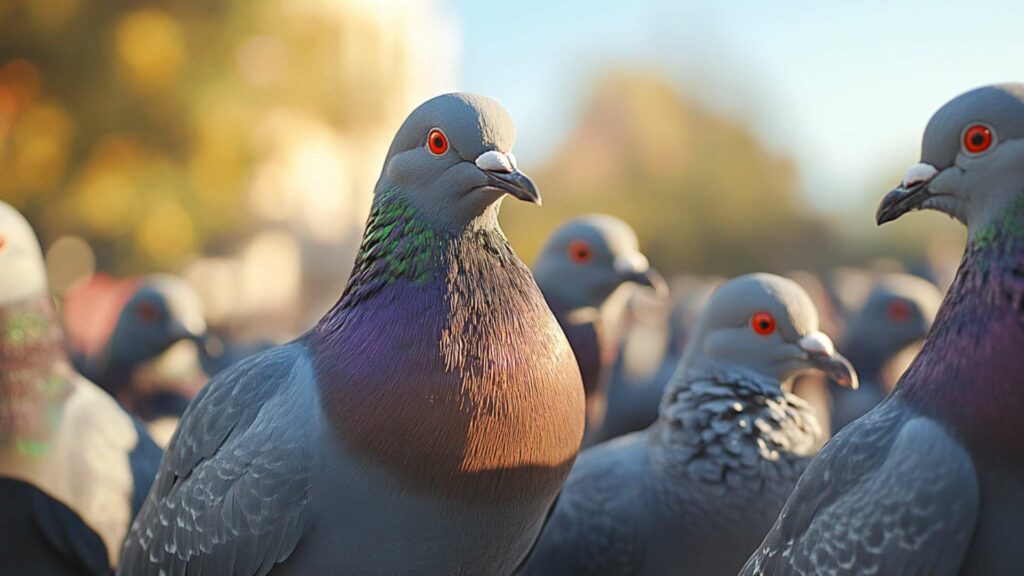
General survival timeline for pigeons without water
Pigeons, like all living creatures, require water to survive. Without adequate hydration, their bodies cannot function properly, leading to severe health issues and eventually death.
So, how long can a pigeon go without water? The answer depends on various factors such as environmental conditions and the bird’s overall health.
In normal circumstances, adult pigeons can typically survive for about two to three days without access to water. During this time, they rely on the moisture content in the food they consume to meet their hydration needs partially.
Pigeons have a specialized organ called the crop that stores food and liquids temporarily before digesting them. In situations where water is scarce or unavailable, pigeons may reduce their activity levels and conserve energy to extend their survival.
Adaptations that enable pigeons to conserve water
Pigeons possess remarkable adaptations that allow them to conserve water efficiently when faced with limited resources. One such adaptation is their ability to produce “crop milk.” Both male and female pigeons produce this nutritious substance in their crops during the nesting period. Crop milk is regurgitated for feeding their young ones and contains essential nutrients necessary for their growth.
During times of dehydration water deprivation or scarcity of fluids, adult pigeons can redirect some of the crop milk production towards self-consumption to provide hydration. This adaptation helps them maintain physiological balance even when access to external sources of water is restricted.
Furthermore, these birds have efficient kidneys that conserve water by producing highly concentrated urine with minimal moisture content. By minimizing fluid loss through urine excretion and exhibiting behavioral adaptations such as reducing activity levels, wild pigeons can enhance their chances of survival in environments with limited access to drinking water.
Overall, while adult pigeons may be able to survive for a couple of days without water, it is crucial to ensure they have access to fresh and clean water regularly. Providing a reliable water container or bird bath can make a significant difference in their well-being, particularly during hot summer months or periods of drought.
Pigeon’s ability to find alternative sources of hydration
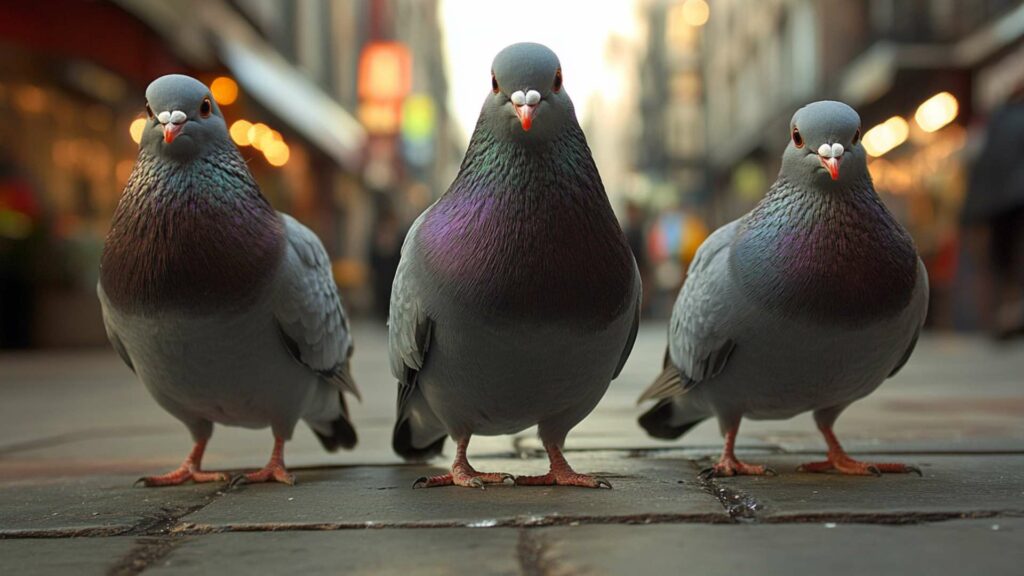
Natural sources of water in urban environments
In urban environments, pigeons have become adept at locating natural sources of water to quench their thirst. Puddles, lakes, and rivers are particularly attractive to pigeons as they provide readily available drinking water. These avian species have a keen sense of smell and can detect the presence of water from a distance.
Pigeons will flock to these bodies of water, using their beaks to sip up the liquids and replenish their hydration levels. Another natural source that pigeons rely on for water is roof runoff and condensation.
The rooftops of buildings often collect rainwater, which then drips down into gutters or forms small pools on flat surfaces. Pigeons are quick to detect these areas and utilize them as convenient sources for drinking water.
Furthermore, condensation that accumulates on surfaces during cooler temperatures serves as a significant source for which pigeons drink water during times when fresh rainwater may be scarce. Pigeons also have a surprising ability to obtain hydration from plants and fruits in urban environments.
They are known to nibble on moist leaves or berries found in gardens or parks. While they primarily rely on liquids for hydration, pigeons can derive some much-needed moisture from the produce available in their surroundings.
Resourcefulness in locating artificial sources of hydration
When natural sources are limited or inaccessible, pigeons demonstrate remarkable resourcefulness in finding artificial sources of hydration within urban areas. One common sight is pigeons gathering around bird baths and fountains found in public spaces or even private gardens. These man-made structures provide an inviting environment for the birds to drink water and bathe.
Additionally, open containers or bowls left by humans inadvertently become inviting watering holes for thirsty wildlife like pigeons. Whether it’s a discarded soda can filled with rainwater or a bowl of water left out for a pet, pigeons are quick to identify and utilize these sources.
Their adaptability and opportunistic nature enable them to make the most of the available resources in their environment. Pigeons’ ability to find alternative sources of hydration showcases their resilience in urban habitats.
They have developed a keen sense for locating water, whether it be from natural sources like puddles or plants, or from artificial sources like bird baths and open containers. This adaptability ensures that pigeons can meet their daily water requirements even in challenging urban environments where access to drinking water may be limited.
Extreme scenarios: Pigeons surviving in arid conditions
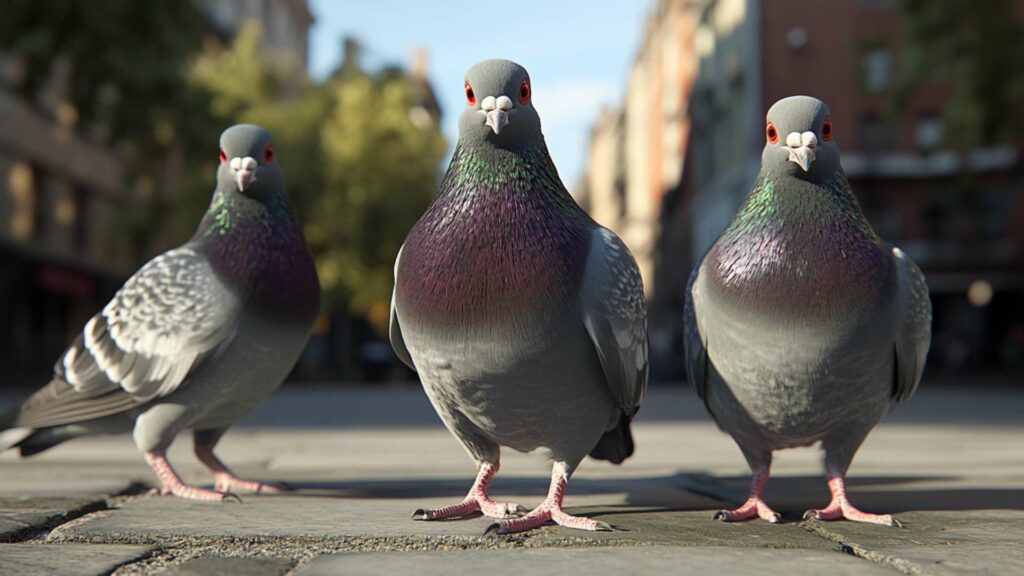
Parched in the Desert: How Do Pigeons Survive?
The ability of pigeons to adapt and thrive in extreme environments is truly remarkable. In arid conditions, where water scarcity poses a constant challenge, these resilient birds have developed strategies that enable them to survive and even thrive. Through observing their behavior and studying their adaptations, scientists have gained valuable insights into how pigeons conquer the desert.
Case studies of pigeons thriving in desert environments
In recent years, researchers have conducted case studies on pigeon populations found in various desert regions across the globe. One such study focused on the Namaqua Dove, a pigeon species native to the deserts of southwestern Africa.
Surprisingly, these doves were found to consume very little water, relying instead on the moisture present in their food. Seeds and fruits make up a significant portion of their diet, providing both sustenance and hydration.
This finding challenges our traditional understanding of avian water requirements. Another captivating example comes from Australia’s Red Center, home to flocks of Spinifex Pigeons.
These extraordinary birds have adapted to extract moisture from succulent plants that are abundant in their harsh habitat. By cleverly pecking at and eating these plants using specialized beaks designed for extracting fluids, they manage to quench their thirst for survival.
Desert pigeon species adaptations
Pigeon species and other birds that inhabit arid regions have developed remarkable adaptations to endure harsh conditions with limited access to water sources. One noteworthy adaptation is their ability to concentrate urine intensely. By reabsorbing water from urine within their bodies before excretion, these resourceful birds significantly reduce water loss while still removing waste products effectively.
Additionally, desert pigeons exhibit behavioral modifications such as minimizing activity during hot periods and seeking shade to conserve water and regulate body temperature. They also tend to be highly efficient when it comes to flight, using minimal energy and reducing water loss through excessive perspiration.
Behavioral strategies for survival
Pigeons have honed their behavioral strategies over time to ensure their survival in arid environments. They have been observed staying close to areas where water is available, maximizing their chances of finding temporary water sources like natural springs or even the occasional rainfall.
Furthermore, pigeons often rely on communal behavior, congregating near watering holes or other reliable sources of moisture where they can share information about nearby resources. In times of extreme drought, pigeons have been known to alter their breeding patterns as a survival strategy.
They may delay nesting until more favorable conditions arrive, ensuring that the energy demands associated with raising offspring do not exacerbate the challenges they face due to limited water availability. To wrap up this exploration into the world of desert-dwelling pigeons, it is evident that these remarkable birds possess a range of adaptations and behavioral strategies that enable them not only to survive but also thrive in arid conditions.
By relying on food with higher moisture content and implementing efficient physiological and behavioral adjustments, pigeons have proved themselves capable of enduring even the harshest desert landscapes without succumbing to dehydration. Truly a testament to nature’s ingenuity!
The consequences of prolonged dehydration on pigeons’ health
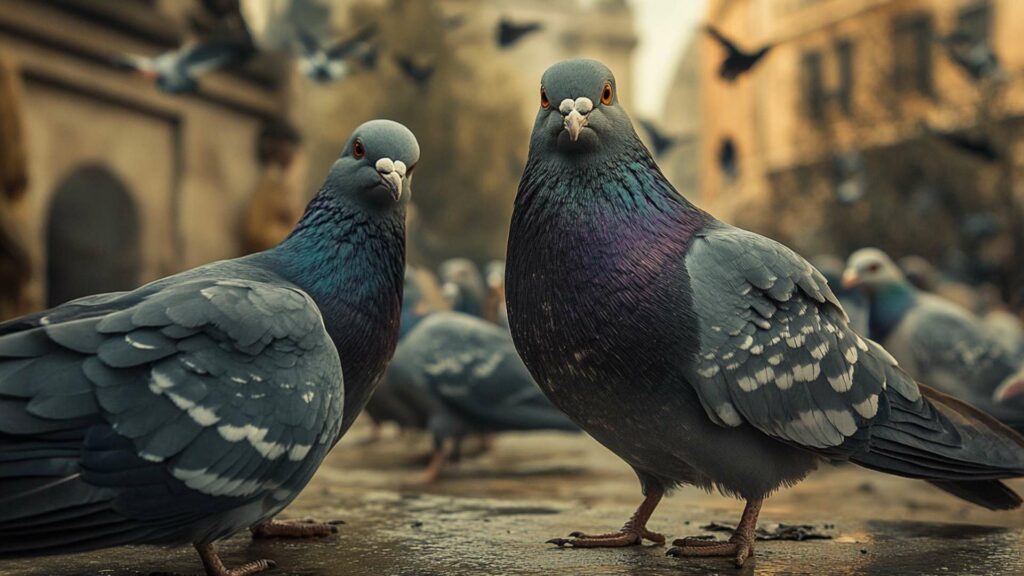
Physiological changes during dehydration
Pigeons, like all birds, heavily rely on water for their physiological functions. When deprived of water for extended periods, pigeons experience various physiological changes that can negatively impact their health.
One of the first noticeable effects is a decrease in body weight due to fluid loss. As the pigeon’s body becomes dehydrated, it gradually loses moisture through evaporation from its respiratory system and skin.
Furthermore, during dehydration, a pigeon’s blood becomes thicker and more concentrated. This increase in blood viscosity can impair circulation and put additional strain on the heart.
The kidneys also play a crucial role in regulating internal fluid balance; however, when deprived of water, they conserve fluids by producing less urine and concentrating waste products. As dehydration progresses further, pigeons may exhibit other signs such as dry and flaky skin or feathers that appear dull and unkempt.
Feathers play an essential role in insulation and protection against environmental elements; therefore, dehydration can compromise their effectiveness. Additionally, without adequate hydration, the pigeon’s beak may become dry and cracked.
Long-term effects on overall well-being
Prolonged dehydration can have severe long-term consequences for a pigeon’s overall well-being. Without sufficient water intake over an extended and prolonged period, various bodily functions can become compromised.
For instance, the digestive system relies on proper hydration to break down food effectively. Inadequate water consumption can hinder nutrient absorption and digestion.
Dehydration also weakens the immune system of pigeons making them more susceptible to infections or diseases. The lack of proper hydration impedes the optimal functioning of white blood cells that serve as the body’s defense mechanism against pathogens.
Moreover, insufficient water intake affects not only adult pigeons but also has a significant impact on baby pigeons or squabs that are still growing and developing. Water is vital for the production of crop milk, a highly nutritious substance that adult pigeons feed their young.
Without enough water, the quality and quantity of crop milk may be compromised, potentially stunting the growth and development of baby pigeons. Prolonged dehydration can lead to various physiological changes and have long-lasting effects on a pigeon’s overall health.
Hence, it is crucial to ensure that pigeons have access to a clean and accessible water source. Providing them with drinking water either through natural sources or water containers can help maintain their well-being and prevent the detrimental consequences associated with dehydration.
Conclusion
Recap the main points discussed
Throughout this article, we have delved into the fascinating world of how pigeons drink and explored their water requirements for survival. We learned that pigeons, like many avian species, need water to maintain their bodily functions and overall well-being. They have a daily water intake requirement that varies based on external factors such as temperature and diet.
We also discovered that pigeons can adapt to survive without water for a certain period of time, employing various strategies to conserve this essential resource. Their ability to find alternative sources of hydration in urban environments, from natural sources like puddles and plant moisture to artificial sources like bird baths, showcases their resourcefulness.
Emphasize the importance of providing accessible water sources for urban wildlife
Understanding the importance of water for pigeons leads us to recognize the significance of providing accessible water sources for urban wildlife as a whole. As cities continue to expand and green spaces diminish, it becomes crucial that we take proactive measures to ensure these birds and other animals have access to clean drinking water.
By providing bird baths or leaving open containers with fresh water in our gardens or balconies, we can create oases amid concrete jungles. This not only benefits pigeons but also supports other avian species struggling with diminishing natural habitats.
Remembering that these birds bring beauty and joy through their graceful flights and melodic coos, it is our responsibility as humans sharing this planet with them to ensure their basic needs are met. While pigeons can survive without immediate access to drinking water for some time due to their adaptations and resourcefulness, it is imperative that we consider their well-being in urban settings.
By using bird seed and providing accessible watering spots amidst concrete landscapes, we not only help support pigeon populations but also contribute towards creating a harmonious coexistence between humans and nature. Let’s embrace the beauty of these feathered neighbors and play our part in preserving their existence for generations to come.
Discourage Pigeons with D-Termination: Las Vegas’ Top Pest Control Solution!
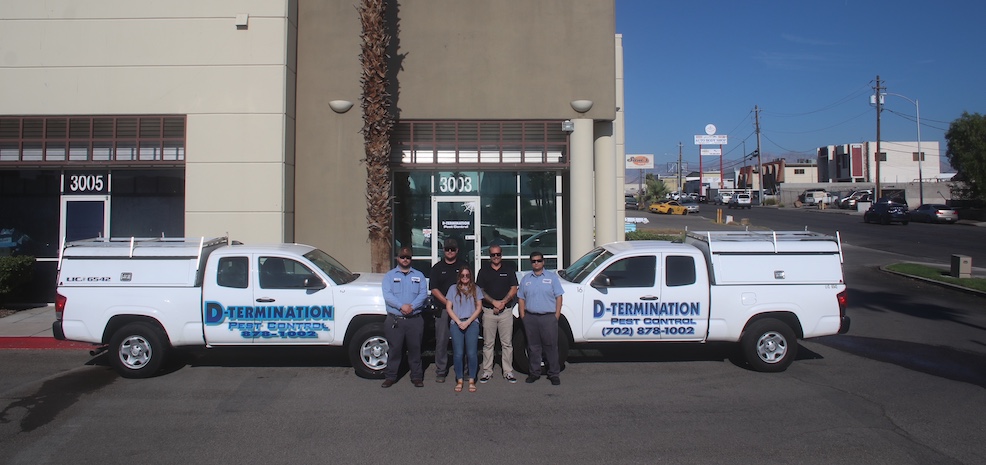
Struggling with pigeon problems? Look no further than D-Termination. Our skilled crew excels at pigeon deterrence, revitalizing the hygiene and integrity of your premises. Bid farewell to pigeons – opt for D-Termination for efficient pest management now!
Reach out to us at 702-919-6310 or explore dtermination.com to schedule your pigeon control service and regain control of your space from these unwelcome intruders.
Frequently Asked Questions:
Pigeons typically need water on a daily basis.
Most birds can’t survive for more than a few days without food or water, depending on the species.
A starving pigeon may exhibit lethargy, weight loss, and decreased activity.
Yes, pigeons can survive without direct human intervention, as they are adaptable urban birds.

